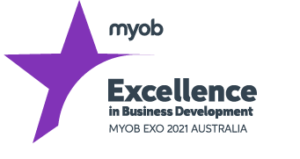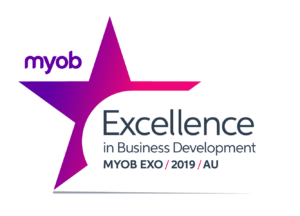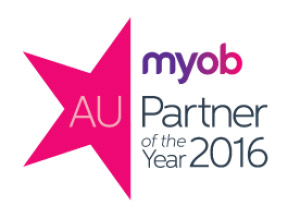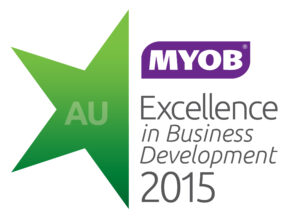Freight Management Models: How Does Yours Perform?
Discover how Freight Management Models can optimise your freight landscape to enhance efficiency and cost savings.Effective freight management is essential, but the right approach can vary depending on your organisation’s unique needs. The logistics of a small boutique retail warehouse differ significantly from those of a national distributor. To ensure an optimised and efficient freight landscape, various strategic freight management models exist to cater to diverse business demands.

MYOB Exo 5 benefits of integration Brochure
Download nowModels for Efficient Freight Management
Efficient freight management models streamline operations, enhance customer satisfaction, and optimise costs. Combining smart technology and the right freight model can unlock cost savings for your organisation.
In-House Freight Management
Some businesses choose to establish in-house freight management operations, leveraging their internal resources and expertise. While this approach may work for organisations with extensive experience and resources within their team, many find themselves reinventing the wheel by building processes, networks, and infrastructure that are already available externally.
Adopting an in-house model provides organisations with greater control over their supply chain processes. At first glance, this appears to be a cost-saving option. However, it requires substantial investments in infrastructure, technology, personnel, and ongoing operational costs. Consequently, in-house freight management often proves to be less cost-effective than expected.
Software solutions to improve in-house freight management
Leveraging software solutions such as TIG Freight that integrate with Enterprise Resource Planning (ERP) systems can increase in-house freight management efficiency. These software platforms provide a centralised hub for managing logistics. This allows seamless coordination and automation of various tasks, including order processing, inventory management, shipment tracking, and reporting.
By integrating with ERP systems, businesses can streamline their logistics operations, improve data accuracy, and gain real-time visibility into their supply chain performance. Businesses must weigh the benefits of using integrated software against the associated costs and complexities to determine the most suitable approach for their in-house freight management needs.
Freight Forwarding (Freight Broker)
Freight forwarding is the act of coordinating the movement of products. In this model, businesses enlist the services of a freight forwarder to act as the intermediary between shippers and carriers. Companies rely on the expertise and network of shipping contacts that these freight forwarders possess, allowing them to manage the complexities and documentation involved. While this model suits organisations seeking someone to handle their distribution and minimise risks, it does not enhance warehouse efficiencies and can be costly.
3PL Model
Third-Party Logistics (3PL) companies act on behalf of a business, as a contractor does, performing the liaising, management, and booking of shipping companies. They function as extensions of an organisation, utilising their experience and network while not necessarily providing additional technological capabilities. It involves outsourcing logistics work while leveraging the 3PL’s expertise and network.
A 3PL service can encompass a range of logistics solutions, including transportation, warehousing, packaging, freight forwarding, cross-docking, and inventory management. The scope of services may extend to customs clearance or weighing operations, contingent on the company’s business model. The goal of a 3PL service is to streamline distribution networks for timely deliveries, expedite the shipment process, and enhance transparency throughout the logistics chain.
4PL Model
A step beyond 3PL, Fourth Party Logistics (4PL) operators manage logistics in addition to shipping operations. This model is often more effective than 3PL because these operators have control over warehousing, packing, freight forwarding, and inventory management. By controlling the entire logistics strategy, the process remains cohesive and consistent, usually by an experienced team that understands effective and efficient methods to streamline warehousing and distribution.
5PL Model
Fifth Party Logistics (5PL) is a relatively new approach in the logistics industry. A 5PL provider collaborates with their client to establish the optimal fix for their whole solution and leverage their expertise and technology platforms to execute it seamlessly. The key advantage of a 5PL model is its ability to offer a holistic approach to freight management. Rather than focusing on specific aspects of the supply chain, a 5PL model offers a comprehensive view, considering all the intricacies and interdependencies involved. This enables businesses to achieve a lean and intelligent supply chain that is finely tuned to their specific requirements. Companies relying on a 5PL provider must trust and rely on the capabilities and performance of the external partner. This level of dependence can introduce risks, such as conflicts of interest or how to operate in the event of 5PL company disruptions.
Different freight management models offer distinct advantages and trade-offs. Businesses must carefully evaluate their specific requirements and consider factors such as cost, control, and efficiency when selecting the most suitable approach. There is no one-size-fits-all freight management model. By choosing the right model for your needs, organisations can optimise their operations, ensure customer satisfaction, and achieve cost-effective outcomes in their freight management endeavours.
Better shipping leads to happier customers
Shipping is a key touchpoint for both the customer experience and your bottom line. Profit margins can be eroded with the wrong shipping supplier and now more than ever customers expect the fastest possible shipping turnarounds.
Register for our free webinar now and discover practical strategies to optimise your shipping process, set realistic and achievable delivery expectations, and fine-tune freight models for smoother, cost-efficient operations and happier customers.
Discover strategies to maximise warehouse productivity
Achieving optimal warehouse efficiency in a period of market decline is paramount; any inefficiency directly impacts your customers and bottom line. Taking steps to maximise productivity now will position your company for success when the market improves. All of the above strategies require a singular focus for your warehouse operations so real-time data can flow seamlessly from the back office to the warehouse floor. MYOB Advanced can support Wholesale Distribution organisations to improve efficiency with tailored, industry-specific functionality.
Watch the webinar recording to discover the strategies, systems, and processes to reduce errors, maximise productivity, and increase operational efficiency. Consider a Warehouse Management System (WMS) like eveXso, based in the cloud and streamlines the picking and packing of orders, bin management, and receipt of goods with integration into your MYOB ERP.
Demand Forecasting for Supply Chains
Accurate demand forecasting is an essential tool for companies to anticipate, adapt, and exceed the demands of both customers and the market. Organisations must embrace advanced techniques to get ahead of demand planning trends, optimise inventory levels, and ensure timely product availability.
Watch our webinar recording to delve into how demand forecasting can transform your approach to building your inventory strategy.
Kilimanjaro Consulting is the premier implementing partner of MYOB Advanced and MYOB Exo across Australia and New Zealand. We are experts at integrating third-party freight solutions into your MYOB ERP to improve efficiency. To start a conversation about how to improve your logistics strategy and unlock cost savings, email samacs@kilimanjaro-consulting.com or call 1300 857 464 (AU) or 0800 436 774 (NZ).
























